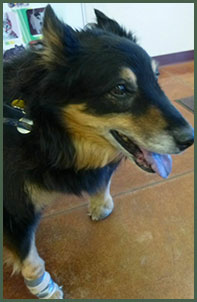Spay and Neuter
Spaying or neutering your pet can help them live a longer, healthier life, minimizes behavior problems and helps control the population of unwanted pets. Spaying or neutering your pet eliminates unwanted litters, which contributes to thousands of euthanasia procedures and millions of stray animals.
If you are shopping around for a competitive price on this procedure, be sure to question the type of anesthetic used, the type of pain management provided, and the monitoring equipment and procedures followed. All of our surgery patients have IV catheters placed and receive IV fluids. We use several monitoring devices during your pet's anesthetic procedure. A veterinary technician continually assesses your pet's vital signs during the procedure. Although the risk of an anesthetic death in a normal healthy pet is very rare, our monitoring devices and procedures allow us to respond to an anesthetic emergency faster. Faster responses can save lives.
Your pet's safety and comfort are our primary concerns when performing a spay or neuter. We use advanced pain management techniques in conjunction with anesthesia to make sure your pet is as comfortable as possible during the procedure and after they are discharged. Our spay and neuter patients receive injectable pain medications during the procedure and always go home with oral pain medication. We also perform local anesthetic blocks at the surgical site. Proper pain management makes the procedure as comfortable as possible and allows for faster recovery.
Spaying
Spaying is a surgical procedure in which both ovaries and uterus are completely removed from your female pet. Also called an "ovariohysterectomy", the surgery is performed while your pet is under general anesthesia. There are many benefits to spaying your female companion. First, you will contribute to the prevention of the dog and cat overpopulation. Second, spaying will eliminate the sometimes 'messy' heat cycles that attract male dogs to your house from miles away. Third, you will help prevent diseases in your pet such as pyometra (infection in the uterus) and mammary cancer. Additionally, research has shown that pets that have been spayed live longer than pets that have not been spayed.
Neutering
Neutering refers to the surgical procedure in which both testicles are removed. There are many benefits to neutering your male companion. First, you will contribute to the prevention of the dog and cat overpopulation. Second, neutering can help eliminate undesirable and at times, embarrassing behavior in your male companion. Third, you will help prevent diseases in your pet such as prostate disease and testicular cancer

News
Updated hours
Starting October 2022, we will no longer be open on Saturdays. Please see our Contact Us/Hours section for our scheduled weekday hours.
(775) 409-3288
















